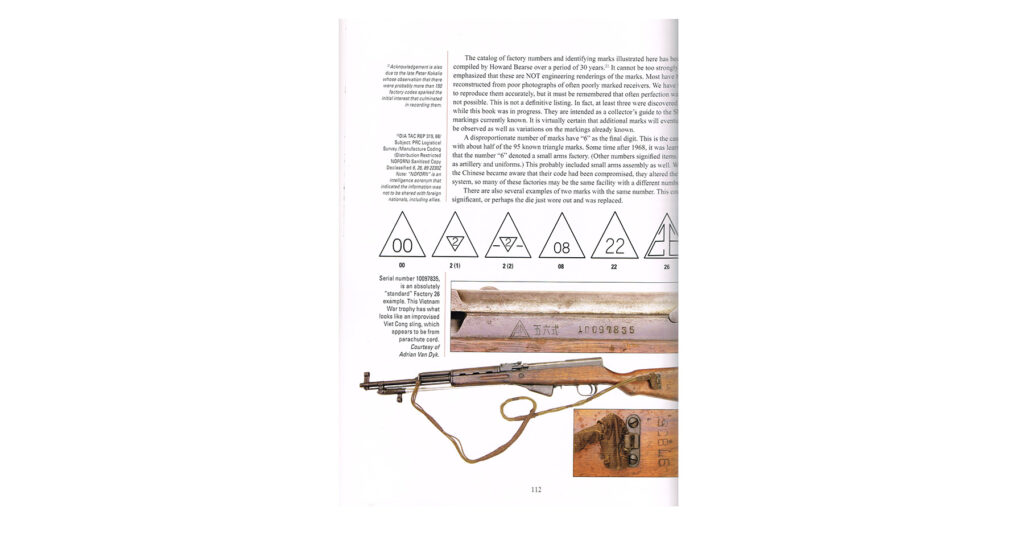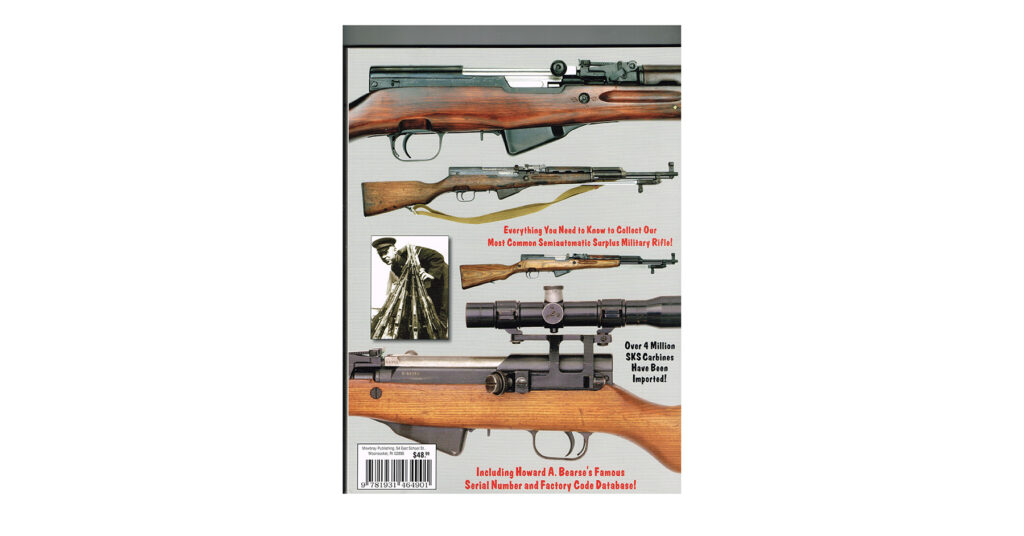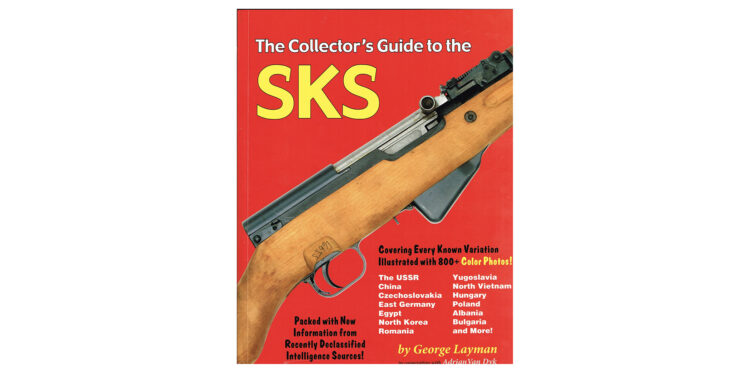Reviewed by Dean Roxby
This is yet another fine book from Mowbray Publishing. This title follows other similar soft cover gun books such as The UZI Submachine Gun Examined, The Italian Vetterli Rifle, The Complete Book of Tokarev Pistols, and Communist Bloc Handguns.
With many, many SKS rifles having been imported into the U.S. (the book says “over 4 million”) from various countries and factories in recent years, a well researched book is most welcomed.
This book was written by George Layman, in cooperation with Adrian Van Dyk. Many of the rifles shown in this book are from Van Dyk’s personal collection of SKS rifles. He owns examples from every country that ever made the SKS. Layman and Van Dyk also cooperated on the above-mentioned work, Communist Bloc Handguns. Many of Van Dyk’s Tokarevs also appeared in that book. (Reviewed by this reviewer several years ago.)

The “Acknowledgements” section names a large number of people that assisted Layman. He was part of the military intelligence machine for 21 years, and several of these individuals were from the “other side”.
A two-page “Foreword” by fellow ComBloc collector Cameron S. White follows, and then a “NOTE OF CAUTION” regarding the potential danger of a free-floating firing pin and old, crusty Cosmoline preservative. If the firing pin is stuck in the forward position, the gun can slam fire as soon as the bolt closes. Note that this occurs without squeezing the trigger or having the hammer drop. This could result in a very unexpected 10-round burst of full-auto fire.
The book is divided into 13 chapters, plus a “Conclusion” and a detailed “Serial Number Appendices”. The first chapter covers the development of the SKS. Following this is a country-by-country study of the many variants of the SKS. As might be expected, the first country profiled is the USSR.
With over 800 color photos contained within the 264 pages, it certainly is well illustrated. The majority of these photos are close-up, detail photos, noting crests, receiver markings, and serial numbers found on various parts. Also, many drawings and renderings of the various factory codes are illustrated. China has a huge number of such codes listed here.

Also covered are rifles similar to the SKS, but not actually so. Specifically, these are the Czech-made VZ-52 and VZ-52/57, the Egyptian Rashid, and the extremely rare and nearly unknown Iraqi built Baghdad rifle (a copy of the Rashid, built on surplus Egyptian machines and tooling.)
The final chapter, “XIII Collecting The SKS”, is a guide for the novice collector. With the fall of the Iron Curtain, the 1990s saw many previously rare variants of Soviet firearms available to the American collector. This chapter helps to sort it all out.
The Conclusion is an interesting bit about Layman’s time serving in military intelligence, and how sources he came in contact with then became friends and provided previously classified information for this book now.
The book ends with “SKS Serial Numbers”, a list of numbers compiled Howard A. Bearse. These systems were meant to confuse western militaries from learning how many firearms in total were produced, and in which factories. It seems to have worked, as there are still questions unanswered… This part mainly deals with Soviet USSR and Chinese numbers, but also touches on North Vietnam, North Korea, and East Germany.
Recommended.
| Title | The Collector’s Guide to the SKS |
| Author | George Layman and Adrian Van Dyk |
| ISBN | 978-1-931464-90-1 |
| Copyright | 2023 |
| Binding | Soft Cover |
| Dimensions | 8.5 x 11 in |
| Pages | 264 |
| Publisher | Mowbray Publishing |
| MRSP | $49 |












